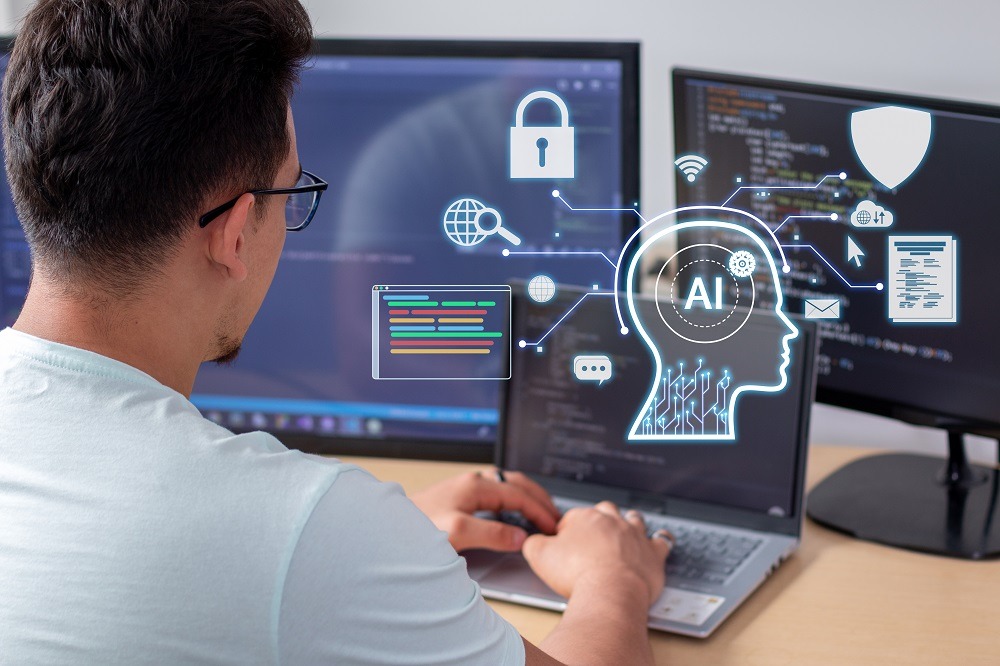Cybersecurity is a constant concern and priority not just for large-scale companies, but also for small businesses. There are new cyber threats to fight off in 2021, as all kinds of cyber attackers hound the internet to implant malware or breach data, all for profit.

The past year was no exception. It is no surprise that cyber fraud, data breaches, and malware attacks increased when the world was whirling due to the pandemic. Any type of vulnerability can and will be exploited, whether it is human or machine error.
Attackers are constantly using sophisticated technologies and techniques to steal information, cause instability, and manipulate billions of internet users. It is why detecting malware attacks and preventing data breaches should be everyone’s business.
How can individuals and websites be a step ahead in terms of cybersecurity?
Leverage from Artificial Intelligence and Machine Learning
Fortunately, cybersecurity technology also continues to improve not just to amplify protection but heighten prevention. Artificial Intelligence (AI) and Machine Learning (ML) are revolutionizing the fight against cyber-attacks.
Cybersecurity experts now use these technologies to come up with comprehensive defense systems to combat hackers and cybercriminals.
Oxford Dictionary depicts AI as the process of developing computer systems capable of executing functions that are normally performed by humans, such as image recognition, speech understanding, decision-making, and language translation.
On the other hand, according to expertsystems.com, Machine Learning, on the other hand, is the use of AI that provides devices with the ability to learn and develop from experience without being directly configured automatically. This technology is concerned with the development of computer programs that can access data and use it to learn on their own.
While AI focuses on computer programs that attempt to mimic human abilities, Machine Learning analyses vast amounts of data, identifying various trends to create algorithms. These two concepts demonstrate that the learning process for AI and Machine Learning is progressive and evolutionary.
Today, AI and machine learning both provide powerful tools that give cybersecurity experts an edge in their cybersecurity plans. In fact, 63% of company executives state that AI increased revenues, 44% of which claim they were able to reduce operational costs.
There is an estimated 88% increase in AI spending just this year alone. And although cybersecurity is only one of the AI and machine learning applications, the deployment of both technologies for cybersecurity is a big factor in protecting company revenues.
AI and Machine learning dramatically improves a computer’s decision-making through pattern and trend detection and streamlines its progress toward superior assessment in unfamiliar circumstances later. This enables cybersecurity software and applications to quickly adapt and learn from different cyberattacks that try to breach a system daily.
Let us see some more about how AI and Machine Learning are changing cybersecurity
Ways that Cybersecurity is Changing through AI and Machine Learning
1. Database Update and Detecting Massive Movements
AI will be used to keep security databases up to date. Artificial intelligence can identify emerging threats by processing logs from different sources.
In other words, AI will gather extensive data from various logs and documents and put two and two together to detect new risks spread by hackers. Through processing data from different sources, AI may also detect malware and spyware patterns.
By using AI, new malicious programs can be discovered even more quickly and until they do widespread harm. There will be more time to develop protection measures to address any vulnerabilities or security holes that the malware or virus will exploit.
2. Detect Unusual or Malicious Activity
Aside from identifying large-scale malware motions, AI can also be used on a person basis to search a device for suspicious behaviour. By regularly scanning, enough data can be gathered to determine whether a certain occurrence is irregular.
Users should be continuously tracked to detect an unwanted entry. If suspicious behaviour is observed, AI may use those criteria to help decide whether it is a hazard or a false alarm.
Machine learning can be used to assist AI in determining what is “normal” behaviour and what can be called “abnormal.” As machine learning advances, AI will become better at identifying minor anomalies that might signify a problem.
As with the first point, the critical point here is finding a pattern. Certain minor anomalies do not seem to be important on their own, but when combined, they may paint a more complete image of what is causing them.
As an example, consider how attackers gained access to third-party supplier passwords to obtain access to the systems of US companies Home Depot and Target. Unfortunately, this was misinterpreted as regular traffic.
AI will continuously scan the system, evaluate various events, compare them, and generate alarm warnings.
3. Detection
This is not the same as how AI senses unusual behaviour. The emphasis here is on artificial intelligence identifying possible vulnerabilities, glitches, and security flaws. Machine learning, for example, can be used to detect whether an application sends out untrusted data.
Infusion SQL vulnerabilities are among the most widely used bugs by hackers and viruses to steal data and gain access to networks. A buffer overload, or where an application positions more data than normal in a buffer, is another vulnerability AI can help detect. Human error is also another environment where AI can assist. Employee errors are among the leading causes of data breaches, and AI may detect them in time to minimize the damage.
On a wider scale, AI will keep existing malware vulnerabilities up to date (as previously mentioned) and scan the current infrastructure to see how vulnerable it is to any new threats.
Artificial intelligence is useful for detecting intrusions as soon as they happen. According to AI Authority, it accomplishes this by searching a vast archive of digital footprints left by previous hackers while attempting to gain access to an internal device.
Only AI can complete this mission so quickly. Embedded systems, such as video cameras, printers, and Internet of Things (IoT) devices, are especially vulnerable.
Some uses of cyber-AI and machine learning are Gmail’s spam filter apps. AI and machine learning are trained through all active Gmail users, numbering by the billions, to improve spam recognition.
MasterCard also deploys AI and Machine Learning for fraud detection. The company uses AI algorithms to predict and detect consumer behaviour and detect abnormal behaviour in real-time.
Lastly, AI and machine learning can also be used for botnet detection. Botnets usually depend on several “users” that make repeated, similar requests, that might be a potential website attack, automated by a master script.
4. Prevention
When AI advances, it will be able to not only detect whether a device or upgrade has a defect but will also automatically prevent such vulnerabilities from being exploited.
If it is installing extra firewalls or correcting coding bugs that result in vulnerabilities, this can be an excellent way to avoid issues.
5. Response
This is equivalent to prevention, but occurs later, after ransomware has already infiltrated the device. As previously mentioned, AI can be used to identify suspicious habits and see the pattern to establish a profile of malware or viruses in the environment.
The following move is to react appropriately to the malware or virus. It involves damage control, removing the virus from the device, patching any security vulnerabilities, and ensuring that additional precautions are in place to deter the virus from infecting the system again.
Other Uses of AI for Cybersecurity
1. eCommerce Security
AI also improves online security for eCommerce sites. Since eCommerce revenues are seen to exceed 4.88 trillion USD by 2021, the integration of AI and Machine Learning to eCommerce is so crucial. eCommerce sites continue to amplify their security to answer the increasing demand for robust and secure transaction and payment systems.
Apart from simplifying operations such as inventory management, CRM (Customer Relationship Management), personalization, lead generation, and the like, AI and machine learning can also strengthen defence and prevention of cyberattacks and strengthen security processes.
Credit card fraud tops the list of things that need to be secured in an eCommerce site. With the increasing adoption of automated retail, cashless payment, and other touchless solutions, AI and Machine Learning can be maximized to prevent credit card fraud.
Both technologies can also be used to defend against deepfake technology fraud and biometric breaches, and to help users choose strong passwords.
2. Mobile Security
There are now 5.22 billion mobile phone users out of the world’s 7.83 billion population. That almost 67% population is also vulnerable to mobile phone attacks, especially with their online transactions. In fact, mobile phones experience the biggest risks in hacking, data breach, and fraud.
Artificial intelligence is regarded as more than just a smart technology that is disrupting markets and current and new technologies. When it comes to the market, AI production builds a benchmark footprint and takes things to a whole new stage. Furthermore, innovative features of this technology have improved the user interface.
AI is best at making strategic decisions quicker and assisting numerous companies in developing creative strategies. The introduction of such mobile app solutions into the market increases competition in the telecommunications industry.
The great thing about AI is that it has quickly dominated the market by pushing mobile technologies. AI introduces the current industry dynamics through its advanced function of assimilates, an immense amount of information at a moment in time. This is the primary reason that artificial intelligence (AI) is causing such a stir in the mobile technology industry.
Because of the rapid rise in data, every size of company is attempting to use mobile technologies. Data is becoming more important over time, and it must be safeguarded. Here comes AI’s vital position as a buffer against the ever-increasing knowledge related to mobile technology.
As with mobile technologies, it is about smartphones, cloud computing, website results, and IoT. As a result, AI combined with advanced technologies is assisting in the enhancement of defence.
Conclusion: AI and Machine Learning for Better Cybersecurity
AI and Machine Learning for Better Cybersecurity
For all types of businesses, cybersecurity should be a major concern. Bear in mind that those who want to harm your business, or your consumers are also using AI and Machine Learning. User data has been exposed in a few data breaches.
Cyberattacks have evolved to become more intelligent and comprehensive. Fraud can be identified with proper AI and Machine Learning because all these technologies can track fraud-like behaviours.
Software and apps will self-adjust and learn from the current situation as AI and Machine Learning gain experience and behave accordingly to protect systems.
AI can also find vulnerabilities in your network defences, so incorporating it into your business is critical for protecting customer data. The sophistication of the information and algorithms will then be interpreted by Machine Learning, resulting in improved protection strategies.
Consumers and the industry you represent will trust you more if you improve your protection. So, use AI and machine learning for better cybersecurity.

Author Bio:
Mayleen Meñez used to work in media before finding her true passion in NGO work, traveling the Philippines and Asia doing so. She home-schools 3 kids and loves reinventing Filipino dishes. She is a resident SEO writer for Softvire Australia and Softvire New Zealand.
Mayleen Meñez Social Credentials
Facebook: https://www.facebook.com/mayleenmenez
Twitter: https://twitter.com/MayleenMenez
LinkedIn: https://www.linkedin.com/in/mayleenmenez/
Instagram: https://www.instagram.com/mayleen_menez/
Images credit by Pro Elements Envato















